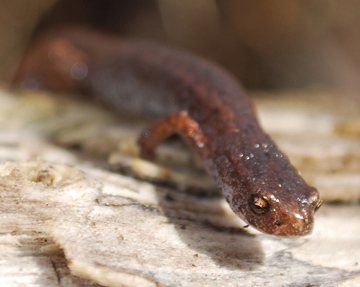Port Republic Township, NJ
Phone: (856) 629-0090
www.state.nj.us/dep/fgw/wmas.htm
NJ Department of Environmental Protection
From KEEP Conservation Preserve, turn Left onto Route 575. After 1.8 miles, turn Right onto CR 624, then Right onto Sooys Landing Road, just after passing under the Parkway. Make the first Right onto an unmarked dirt road, and proceed for 1.3 miles to the parking area for Port Republic Wildlife Management Area. DIRECTIONS FROM NEAREST HIGHWAY: From the Garden State Parkway, exit at the rest stop at mile 41, and follow signs for Jimmie Leeds Road. Turn Right at the traffic light onto Jimmie Leeds Road. Turn Left at the first light onto Great Creek Road. Turn Left at the next traffic light onto Pitney Road. After 3 miles, turn left onto Route 575. After crossing the bridge, bear Left onto CR 624. After passing under the parkway, turn Right onto Sooys Landing Road. Make the first Right onto an unmarked dirt road, and proceed for 1.3 miles to the parking area for Port Republic Wildlife Management Area. Map
Continuing on the dirt road parallel to the Garden State Parkway for another 0.6 miles leads to another parking area. From here trails explore more pine barrens forest, swamp, and sandy clearings with log piles that are good place to search for reptiles.
 |
| Four-toed Salamander | Tony Geiger |
| |
| | Port Republic WMA occupies four large parcels strewn around the small, colonial seafaring town of Port Republic in northeastern Atlantic County. From the access at Sooys Landing, a mixture of habitats from pine/oak uplands to cedar/maple swamp sand salt marsh typifies what can be found around the small coastal rivers of southern New Jersey. After hiking far enough from the Parkway, visitors will find this area quite rustic and secluded, with intriguing old-growth trees and abandoned duck blinds accenting the natural landscape.
Breeding Bald Eagle pairs and their offspring can be observed here with a little effort in late fall thru late summer wherever the open waters of the Mullica River or Acute Creek can be scanned.
Scan the fields for flocks of White-throated Sparrows and Juncos, where Fox Sparrow, Swamp Sparrow, and Savannah Sparrow often join the mix. Red-bellied Woodpecker, Northern Flicker, and Yellow-bellied Sapsucker spend the winter. Great Horned Owl, Screech Owl and occasionally Long-eared Owl roost in the evergreens. Muskrat and River Otter travel through the small creeks in the early morning and late evening. Bald Eagles circle overhead. Red-breasted and Common Merganser dive in the river.
The woods come to life with songbirds, including Yellow Warbler, Blue-winged Warbler, White-eyed Vireo, Blue-gray Gnatcatcher and Rose-breasted Grosbeak. Amphibians such as pickerel frog, green frog, spring peeper, chorus frog, four-toed salamander and red-backed salamander can be found by walking near edges of vernal pools and along the ditches at the perimeter of the fields. This is also a good way to flush American Woodcock and Wilson’s Snipe. Flocks of Short-billed Dowitcher, Yellowlegs, Semipalmated Plover and Least Sandpiper travel along the river.
Listen for the signature whistle of Northern Bobwhite in the early morning. Marsh Wren, Seaside Sparrow and Common Yellowthroat sing throughout the day. Shorebirds such as Glossy Ibis, Willet, Green Heron and Great Blue Heron forage in the salt marsh. Forster’s Terns and Black Skimmers fish along the river. Black-crowned and Yellow-crowned Night Heron are frequent visitors. Swallows, butterflies, dragonflies and damselflies are abundant in the meadows. Reptiles to look for include ribbon snake, Northern water snake, ring-necked snake, snapping turtle, diamondback terrapin, wood turtle, and fence lizard. Common Nighthawks feed over the meadows at dusk.
White-tailed Deer are conspicuous. Gray fox, coyote, and raccoon are present and can be tracked, but more difficult to spot. Migrant songbirds include Rufous-sided Towhee, Yellow-rumped Warbler, Hermit Thrush, Baltimore Oriole, American Redstart and Pine Warbler. Keep an eye out for Eastern Meadowlark, Bobolink and Eastern Bluebird in the fields. Raptors such as Kestrel, Merlin, Sharp-shinned Hawk, Osprey, Harrier and Red-tailed Hawk stop over on their way South. Scan the river for Ruddy Duck, Bufflehead, Ring-necked Duck and Black Duck. Wild Turkeys work the fields.
|